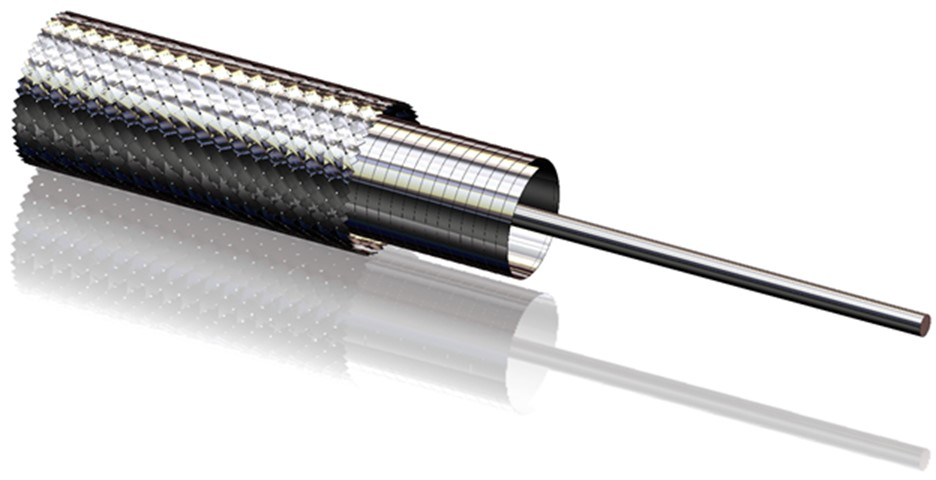 Interview conducted by Olivia FrostOct 26 2020
Interview conducted by Olivia FrostOct 26 2020Patrick Meinert, Product Manager from ULBRICH, speaks to AZoM about the impact precision raw materials manufacturing has on RF cable manufacturing.
What impact does precision raw materials manufacturing have on RF Cable manufacturing?
Precision raw materials manufacturing can increase product reliability, productivity, consistency, and overall performance of the finished cable. Precision raw material manufacturing data can be a leading indicator of the performance of the finished product. As a result, it can give the cable maker the ability to improve resource management, reduce costly rejection rates of the final product, and improve their innovation cycle.
Allowing our customers to produce the next generation of cables gives them a better chance of success in the marketplace and an “edge” on the competition.
The manufacturing process can significantly impact the assembled cable, and for that reason, we think of our product more of as a component than raw material for cables. We like to work with customers on writing our specifications in a way that reflects this distinction so that they can meet the tightening specifications of the next generation of cables.
Through Ulbrich’s focused Engineering and Product Development efforts, Ulbrich has identified the rolled flat wire product's key characteristics that directly impact the final cable's signal quality. Customers have documented results using Ulbrich Flat Wire in new and existing cable designs demanding higher signal quality levels. Customers also find the benefits of our precision drawn round wire in center conductor and braid applications.
How important are material characteristics in terms of when micro-bending wrapping shield wire?
The stresses on the material during the micro-bending wrapping process can vary greatly: from company to company, design to design, product to product. In most cases, the material characteristics are not fully defined in the material specification but will directly influence the wrapping process. Understanding the relationship between the wire's mechanical properties and the wrapping process variables will impact the overall performance.

Image Credit: Ulbrich
We can custom produce a wrapped wire with unique mechanical properties that are best suited (i.e., “match”) for their individual processes. Mil-Specs tend to be very generic that does not tell the whole story. Our broad range of capabilities regarding mechanical properties “fill in the blanks” that are not included in the specs but have a huge impact on the cable's overall performance.
We have custom-produced material properties to solve issues with increases in dynamic resistance after cable assembly. They seem to be most important for wires under .002” (50 microns) that undergo tighter wrap circumferences.
Ulbrich’s ability to examine and measure internal metal grain structure has led to developments in custom flat wire properties fitting unique cable designs.
What is the overall impact of manufacturing the materials that go into a cable with the tightest tolerances on both the performance and capabilities?
Dimensional and mechanical property consistency of the specialty wire components (Center Conductor, Wrap, and Braid wire) will give the cable manufacturer the ability to reduce VSWR spikes (reduced rejection rates), allow for a wider operating window in their manufacturing process, and produce cables with higher bandwidth/frequency. We give our customers more flexibility/options for their processes.
We apply tighter tolerances during the manufacturing of the cable components, so our customers don’t waste material and time dialing in their machine for a new material batch. This can really be seen when we improve our FFT limits for customers who have been given tougher VSWR limits.
Process controls are in place to make sure continuous lengths of wire have consistent mechanical properties.
How does this affect the maintaining of the performance over longer lengths of cables?
Our wires' precision will reduce signal loss within the cable and allow the cable manufacture to produce longer cables at the same high performance. Our wire's precision and consistency will also increase the final cable's stability, allowing it to withstand flexing, vibration, and movement over a longer period of time without increasing the risk of signal loss. The cable may also withstand rougher handling during installation and bundling.
We have noticed that making a cable longer can cause dimensional changes that normally would affect the VSWR to become a problem. However, we can work through this by extending our FFT limits to this longer period length.
What are the different applications for silver-plated copper-clad aluminum and silver-plated copper-clad stainless steel?
These specialty bi-metal alloys allow design engineers to reduce the overall weight of a cable or reduce the cable's overall size without sacrificing the performance. CCS will add strength, flexibility and maintain conductivity to the cable without increasing its overall dimensions.

Image Credit: Shutterstock/Flegere
Copper clad aluminum is commonly used in applications that require weight-savings yet must maintain a certain amount of conductivity. Copper clad steel adds strength and makes it more resistant to flexure while maintaining conductivity.
What are some of the advantages behind using silver plated and copper cladded materials to preserve electrical properties?
Silver is a highly conductive material. These materials allow design engineers to build cables with higher bandwidth, higher frequency, higher speeds, less signal loss over greater lengths with greater consistency. Heat management and corrosion resistance are other attributes in cable design that can benefit from these specialty alloys. Ulbrich has in-house plating capabilities to custom produce silver-plated products with a wide variety of controlled plating thicknesses to meet your exacting requirements.
The silver plating is even more conductive than the copper and offers a path of least resistance for the current to flow through.
Why are these materials ideal for microwave cable applications?
Combining their reliable conductivity properties, mechanical properties, and formability properties makes them effective materials for this application. They are also available in many forms: ultra-fine cross-sections (round and flat) and high aspect ratios (thickness to width).
What are the advantages of the addition of alloying agents?
The alloying agents can improve specific mechanical properties without sacrificing other characteristics. For example:
- improved strength while losing minimal conductivity
- increase flex-life without reducing the strength
- increasing strength without sacrificing conductivity or elongation
The addition of alloying agents results in the material being able to reach properties that would be impossible with pure copper. This is usually done to improve the strength of the copper. However, there is always a give and take - the higher you push the strength of the copper alloy, the lower the conductivity drops.
Can you define and discuss the importance of inline FFT analysis?
Fast Fourier Transformation (FFT) analysis can measure repeating dimensional changes in thickness, width, or diameter during the manufacturing process. These repeating patterns (changes in the dimensions) can have a direct effect on the Voltage Standing Wave Ratio(VSWR) of the finished cable. This is most important for helical wrap wires and center conductors. The primary benefits of FFT analysis:
- Product Consistency in the wire:
- The data confirm when our manufacturing process is under control
- It identifies when and what PM is needed in the process
- It identifies wherein the process, dimensional variability is introduced and to what degree
- It identifies/confirms the “ideal” manufacturing process
- Predictor of the performance of the final cable in advance:
- Identifies VSWR spike risk/potential
- Bandwidth/Speed: GHz
- Length of Cable
What do these innovations and developments mean for the future of precision metals?
Our advancements will lead to a better understanding of our specialty wires' impact/relationship on the finished cable performance. It will lead to the cable manufacturer's productivity and performance gains and increases their ability to achieve success in a competitive marketplace. Allow them to offer faster, lighter, and more stable cables as demands go higher for the next generation of applications. Ulbrich has proven success in partnering with manufacturers in product development and improvement.
About Interviewee
I have been with the company for 25 years. Served multiple roles that focused on the development, growth, and support of our key markets/products. I help facilitate/manage the relationship between our company and our customers.
Collaboration/Input provided by Patrick Meinert, Product Manager, and our technical group.
Disclaimer: The views expressed here are those of the interviewee and do not necessarily represent the views of AZoM.com Limited (T/A) AZoNetwork, the owner and operator of this website. This disclaimer forms part of the Terms and Conditions of use of this website.